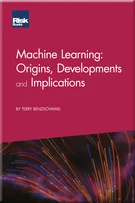Scenario analysis framework and BEICFs integration
Rafael Cavestany, Brenda Boultwood and Daniel Rodríguez
Introduction
Challenges of operational risk advanced capital models
Part I: Capture and Determination of the Four Data Elements
Collection of operational loss data: ILD and ED
Scenario analysis framework and BEICFs integration
Part II: General Framework for Operational Risk Capital Modelling
Loss data modelling: ILD and ED
Distributions for modelling operational risk capital
Scenario analysis modelling
Exposure-based approaches
BEICFs modelling and integration into the capital model
Hybrid model construction: Integration of ILD, ED and SA
Derivation of the joint distribution and capitalisation of operational risk
Backtesting, stress testing and sensitivity analysis
Regulatory approval report
Evolving from a plain vanilla to a state-of-the-art model
Part III: Use Test, Integrating Capital Results into the Institution’s Day-to-day Risk Management
Strategic and operational business planning and monitoring
Risk/reward evaluation of mitigation and control effectiveness
Appendix 1: Credibility theory
Appendix 2: Mathematical optimisation methods required for operational risk modelling and other risk mitigation processes
Business risk quantification
Having defined the collection process and sourcing of loss data in Chapter 2, in this chapter we present a scenario analysis (SA) framework that will permit the ability to collect scenarios in an adequate format and quality for its use in the capital model. The SA framework includes the incorporation of business environment and internal control factors (BEICFs), the fourth and last of the data elements of capital, as an input to SA.
SA allows the introduction of expert judgement within operational risk management and quantification. Expert judgement is used in many areas of science, business and policy making for forecasting future events when little relevant data is available. It is also used by credit and market risk management via stress testing and sensitivity analysis, which are based on expert defined scenarios. Expert judgement is used even when a model is created with wide historical data, since it provides circumstances not sufficiently represented in such historical data. In fact, it is those circumstances with little or no historical data that organisations generally worry most about, while those with abundant historical data are commonly better understood and
Copyright Infopro Digital Limited. All rights reserved.
As outlined in our terms and conditions, https://www.infopro-digital.com/terms-and-conditions/subscriptions/ (point 2.4), printing is limited to a single copy.
If you would like to purchase additional rights please email info@risk.net
Copyright Infopro Digital Limited. All rights reserved.
You may share this content using our article tools. As outlined in our terms and conditions, https://www.infopro-digital.com/terms-and-conditions/subscriptions/ (clause 2.4), an Authorised User may only make one copy of the materials for their own personal use. You must also comply with the restrictions in clause 2.5.
If you would like to purchase additional rights please email info@risk.net










